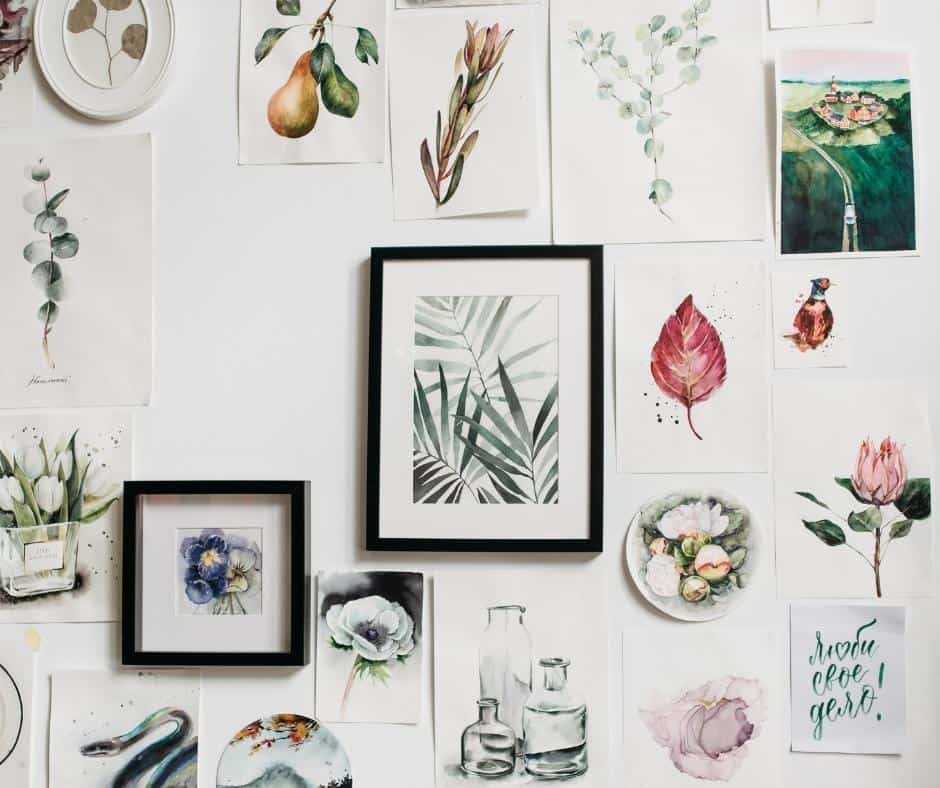Each wall in your home can be decorated in a variety of ways. But, should every wall have something on it? Or is that just a waste of time and money?
There are many benefits to having something on your walls. It can add personality and character to a room, it can help to define the space, and it can provide visual interest. However, there are also a few things to keep in mind when decorating your walls. Ultimately, this decision will come down to the size of the room and your personal style.
In This Article We'll Discuss
Is it Ok to Have Bare Walls?
There is no definitive answer to this question because it depends on personal preference. Some people find bare walls to be sterile and uninviting. However, others enjoy the simplicity and minimalism of an all-white or all-gray room. Ultimately, it is up to the individual to decide what they prefer.
Some people recommend adding artwork or photographs to bare walls to make them more visually appealing. Others suggest using decorative wallpaper, either in a single color or with a pattern. If you decide to go with wallpaper, be sure to choose one that is easy to clean and that will not show dirt and dust easily.
When Do You Know to Hang Art on a Wall or Leave it Blank?

A good rule of thumb is to hang art on the wall if it has meaning. You should avoid hanging art just to add a visual effect or for decoration when you can accomplish that in other ways.
For example, you might add color and texture by choosing an interesting rug instead of using a painting. Otherwise, you would be overloading the room with design elements.
Placing artwork in high traffic areas such as entryways and hallways creates a dialogue between the interior and exterior of your home. And, it helps define how different spaces feel within one structure.
Black and white photos look particularly striking in these areas. That’s because their minimalistic nature contrasts well with commonly decorated walls in living rooms, dining rooms, and bedrooms.
The decision to hang art or to leave the walls blank comes down to how you want your space to feel and what kind of statement you want to make. If you’re still unsure, it’s always best to consult with an interior designer who can help create a cohesive look for your entire home.
How Many Walls in a Room Should Have Art?
The number of walls in a room that should have art depends on the size of the room and the type of art you are hanging. Smaller rooms can get away with just one or two pieces of art, while larger rooms may need four or more pieces.
If you are hanging a large piece of art, it will likely take up an entire wall. Then, you won’t need to hang art on any other walls. But, if you are hanging several small pieces of art, try to distribute them evenly throughout the room. This will create a more balanced look and prevent the room from feeling too crowded.
Typically, you should hang art approximately ten to twelve inches above the furniture. If you are hanging art over a piece of furniture like a sofa or chair, make sure that the frame is level with your eye when standing up (if you are looking at it from across the room). When hanging art in an entryway or hallway, try to place it at head height. That way, everyone who walks into the room will be able to appreciate it.
When hanging large pieces of art, look for a stud in the wall and use drywall anchors. Drywall anchors work by expanding inside of the wall to provide extra support for larger pieces of artwork.
How Many Walls in a Room Can Be Left Bare?
There is no definitive answer to this question as it will depend on the specific room and the preferences of the people living in it. Some people may feel that all four walls should be covered with something, while others may be happy with just one or two decorations. Ultimately, it is up to the individual to decide how many walls they want to be bare.
Some people may choose to leave at least one wall bare so that they can hang artwork or photos on it, while others may prefer to have a plain wall to create a sense of spaciousness.
Having at least one bare wall can also be helpful when you want to make a small room feel larger. If all four walls are covered with furniture or other objects, it can make the room feel cramped and claustrophobic.
Whether or not to leave walls bare is ultimately a personal decision, but there are some things to keep in mind when making this decision. If you are undecided about whether or not to leave a wall bare, try experimenting with different options and see what you prefer. You may be surprised at how much of a difference it can make.
Do Pictures Have to Be Centered on a Wall?

The answer to this question is not a simple one. While it is generally recommended that pictures be centered on a wall, there are exceptions to this rule. For example, if you have a large piece of art or a tall picture, it may be more aesthetically pleasing if it is placed off-center.
Another thing to consider is the layout of your room. If your walls are very wide, it might make more sense to place your pictures at one end of the wall rather than in the middle. Or, if you have a lot of furniture in the room, it might be better to cluster all of the pictures together in one area.
Conclusion

Some people feel that every wall should be covered in something, while others believe that leaving walls bare can create a more minimalist look and feel. Ultimately, it is up to the individual to decide what they think looks best. If you are unsure of what you want, try experimenting with different options and see what works best for you.

